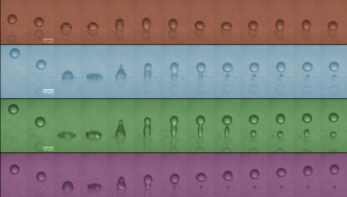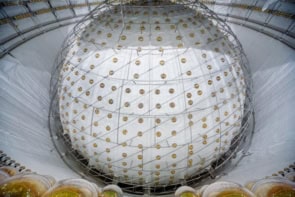A new study has cast further doubt on controversial claims made earlier this year that nuclear fusion was achieved in a bench-top ‘sonoluminescence’ experiment. In the first measurements of their kind, Yuri Didenko and Kenneth Suslick of the University of Illinois in the US tracked the processes that occurred in a single bubble in water when it was compressed by pulses of sound. They conclude that endothermic chemical reactions would make it “exceedingly difficult” to reach the high temperatures needed to spark nuclear fusion in such bubbles (Y Didenko and K Suslick 2002 Nature 418 394).

Bubbles trapped in a liquid can be forced to expand and contract by firing acoustic pulses into the liquid. When a bubble expands, molecules from the surrounding liquid evaporate into it. This vapour is then compressed when the bubble contracts, and can reach temperatures and pressures that are high enough to kick-start chemical reactions and spark the emission of light – a phenomenon known as sonoluminescence.
In March, physicists in the US caused a stir when they claimed to have seen deuterium nuclei fuse in bubbles in ‘deuterated’ acetone. The team led by Rusi Taleyarkhan of Oak Ridge National Laboratory calculated that the temperature inside the bubbles must have reached tens of millions of degrees for the reaction to proceed. But many researchers working in the field dismissed these claims.
Now Didenko and Suslick have shed some light on the controversy by studying how the acoustic energy is distributed between chemical reactions, light emission and bubble collapse during sonoluminescence. To do this, they created a bubble – which was 30 µm across – in a water-filled cell, and made it oscillate using an acoustic signal with a frequency of 52 kHz.
To monitor the production of hydroxyl ions, nitrous oxide ions and photons in the bubble – which contained air and water vapour – the pair used fluorescence techniques and spectroscopy. Measurements were made at both 3 and 22 °C.
At its largest, the bubble had a potential energy of several MeV, and the researchers found that most of this energy is dissipated as shock waves and motion in the surrounding liquid. They also discovered that less than a millionth of this energy is converted into light, but about a thousandth of the energy is used to ionize the molecules of water vapour in the bubble.
According to Didenko and Suslick, this suggests that chemical reactions would soak up too much of the energy for nuclear fusion to take place, especially for bubbles in volatile liquids like acetone. The molecules of vapour in such bubbles are complex, and would absorb much more energy than the water vapour that they studied. But Suslick does concede that “the possibility of fusion occurring in low-volatility fluids – such as liquid metals and molten salts – cannot be ruled out at this time.”
There have been previous studies of the chemical reactions and light production associated with sonoluminescence, but these have focused on clouds of bubbles rather than single ones. These experiments have been difficult to interpret because it is hard to tell how many of the bubbles in the cloud are active at any one time.



